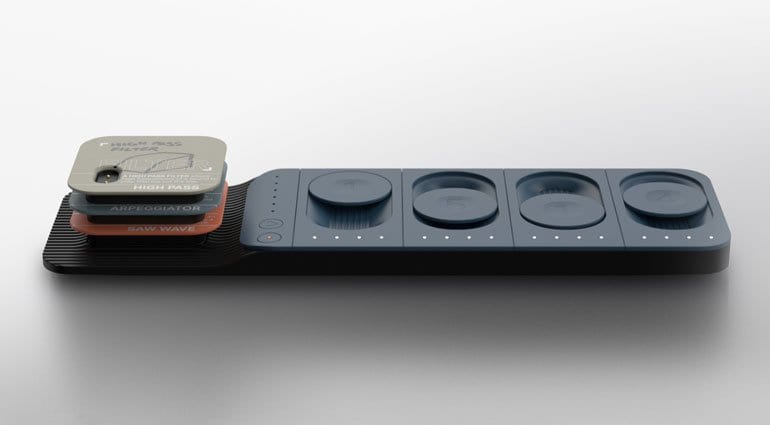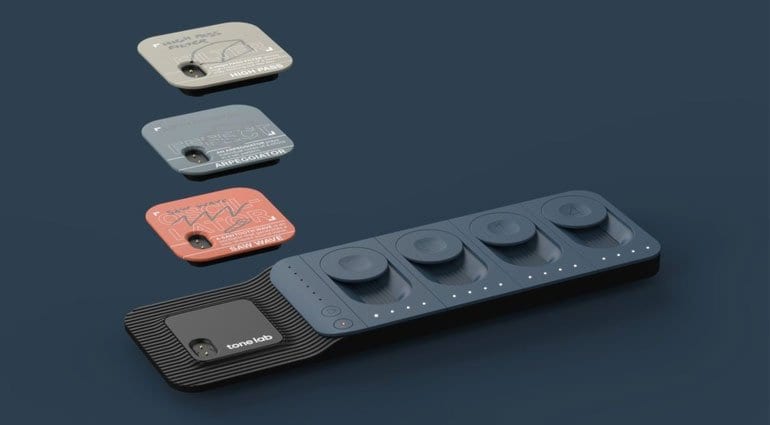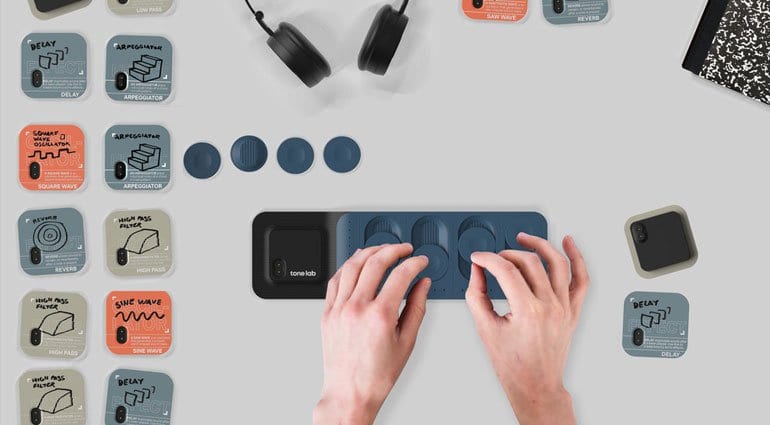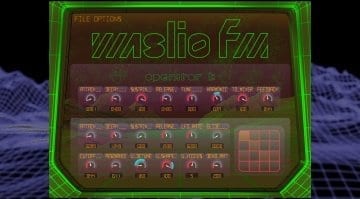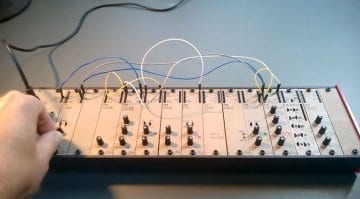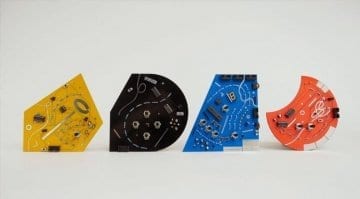Tone Lab: a stackable modular synthesis system for easy music making
Apparently, all this music making business with synths, DAWs and whatnot is really hard. It can certainly be a bit challenging. Well, never fear because designer Colin Hearon has had a notion about how to make the whole experience both simple and beautiful. Meet Tone Lab, a synthesizer for “youth and adults alike” that focuses on the stacking of physical components to structurally represent the creative process.
Tone Lab
So the idea is to give you a very interactive, modular system that you use to generate sound, chords and melody. The main part of the device consists of 4 buttons/tokens/pebbles that sit in 4 lanes that represent chords. This is attached to the Tone Lab stackable interface. The idea is that you take each component of the sound you are generating and stack them up in layers. Start with a waveform, add an arpeggiator, a filter, then a delay and so on. Set Tone Lab running and it plays back the chords you’ve chosen with the sound you’ve constructed. The pebbles then become modifiers for various parameters.
There’s a whole bunch of these layers that you can add that can provide all the usual synthesis functions. Players learn through experimentation. Add another layer, listen, tweak the settings, swap it for something else.
I have to say it’s a beautiful piece of work. The design is awesome and the fun and simplicity injected into the layer pieces is really quite fabulous. Where it falls down for me (maybe literally) is with the stackable concept. You can’t see the signal flow, as soon as you place another layer you lose sight of the layer underneath. One of the great things about a hardware interface is that you don’t have to deal with tabbed pages and hidden parameters whereas Tone Lab hides things from you on purpose. I get the linearity of the process – do one thing, before moving onto the next one – but that also ends up being very restrictive. Although, the stackable idea is very neat and designed in such a way to keep the names of each layer visible, so it certainly has merit.
Wouldn’t it be better to have all the pieces laid out in front of you, so that you could connect things side-by-side? Seeing the signal flow grow in front of you and letting you easily rearrange the components. This is actually the very essence of modular synthesis. The very fact that you can witness and construct the signal flow. That you build up a patch by a linear process of audio signal processing and control. It can appear very complex but it doesn’t have to be.
I applaud what Colin has done in terms of trying to tackle complexity in synthesis and using building blocks is a really good idea. And I love the designs on the blocks. We’ve seen this sort of thing with Audio Cubes and Reactable. But I think the stack creates it’s own problems. Another solution that springs to my mind immediately is the Moog Grandmother. The Grandmother perfectly lends itself to teaching the signal flow of synthesis because of the colouring and layout of the modules.
So, I think he’s onto something and it will be interesting to see if it becomes a product and what sort of reaction it gets. I think if he put connections in the side – or heck, use some kind of patch cable – that would make for a more open and creative workflow. What do you think?
More information
- Colin Hearon Tone Lab page.
Video
You are currently viewing a placeholder content from Vimeo. To access the actual content, click the button below. Please note that doing so will share data with third-party providers.
